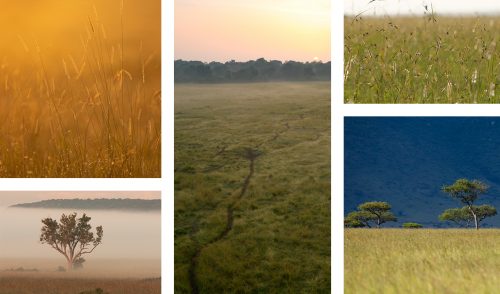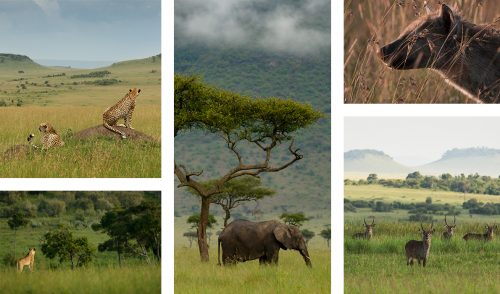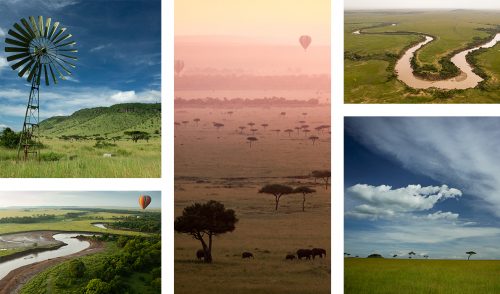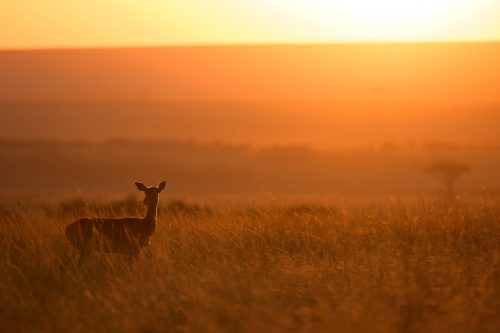
In my opinion, wildlife photographers in the Maasai Mara – myself included – are all guilty of one thing: an over dependance on the big lens. We all fall prey to wanting to zoom in too much, to capture the intricate details on the lion’s face - the flies, the scars, the texture of each hair. Don’t get me wrong, I love a good close-up as much as the next person, but I often have to remind myself as well as the guests who accompany me out on photographic safaris that what makes the Maasai Mara so special is the space, the sense of freedom across the magnificent landscapes.

Then why not spend more time focusing on taking those photographs? It’s a habit of ours to reach for the zoom lens and focus in on the action, but I urge everyone to try and break this habit. Sometimes I’ll go on a drive leaving all my big lenses behind. It’s only when zooming out and showing the landscape, that we can capture the full picture and all of its context. We like to call it an ‘Animalscape', as it depicts an animal in its landscape. After all, the two are interconnected, intertwined, inseparable…

I often meet photographers who fuss about the length of the grass in the Mara in the early months of the year. I have now photographed four consecutive Januarys and I understand what they are saying; I would, however, counter that this is the time of the year when the landscape is at its most beautiful. The grasses that you see carpeting the undulating vistas of the Mara Triangle are crucial for the reserve's very success and existence. It is called Red Oat Grass (themeda triandra) and is highly sought after by grazers. It is a good indicator of a healthy landscape and would disappear quickly if the area was overgrazed. Driving through a sea of red-coloured grass like Moses is a testament to the Mara Conservancy and their habitat management plan. Instead of fighting against the longer grass, working with it adds its unique richness and beauty to your photographs. Capturing a lioness walking through the long grass adds an air of mystery to the image…it tells more of a story, roots her to her home, and gives the viewer a more complete understanding of the importance of the landscape as a whole.


We always dream of taking magnificent photographs, images that are unique and memorable and show a subject in an entirely new light. At the end of the day, whether you take photographs as a hobby or as a profession, we all aim to capture moments we will remember as we document the natural world.
Visiting the Maasai Mara in the early months of the year allows you to concentrate on these extraordinarily beautiful vistas, these contextual shots and the very essence of what makes this place so special and unique. The lighting is radiant, the clouds expectant, the temperatures perfect – and the reserve almost entirely empty of people. Heaven.

I went through my archives of photographs taken in the month of January over the years of 2018 - 2021. I chose as many previously unshared images as I could that capture the beauty and diversity of the landscape as well as how it lends itself to creativity and playing with light. I hope that these images inspire a different approach to looking at the terrain and the grass.
Filed under: The Mara
Subscribe for Weekly Stories
Comments (0):

Rates & Availability